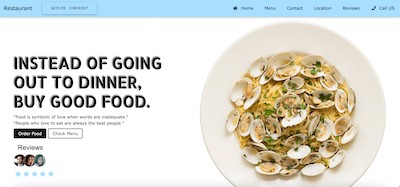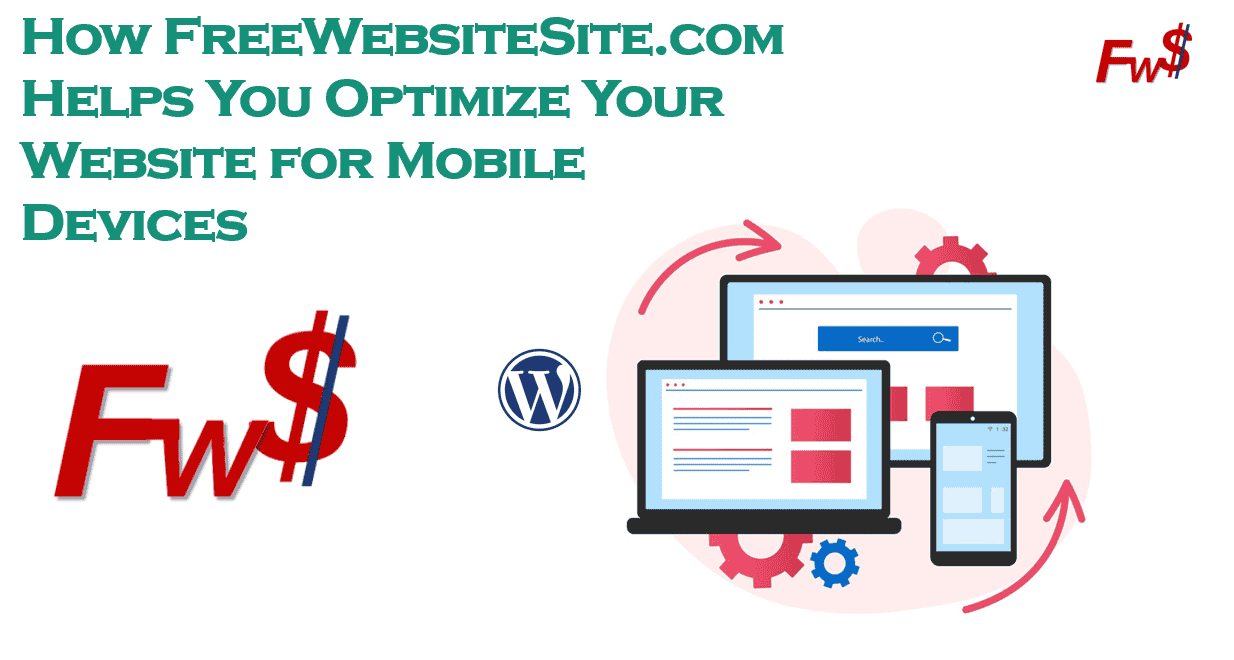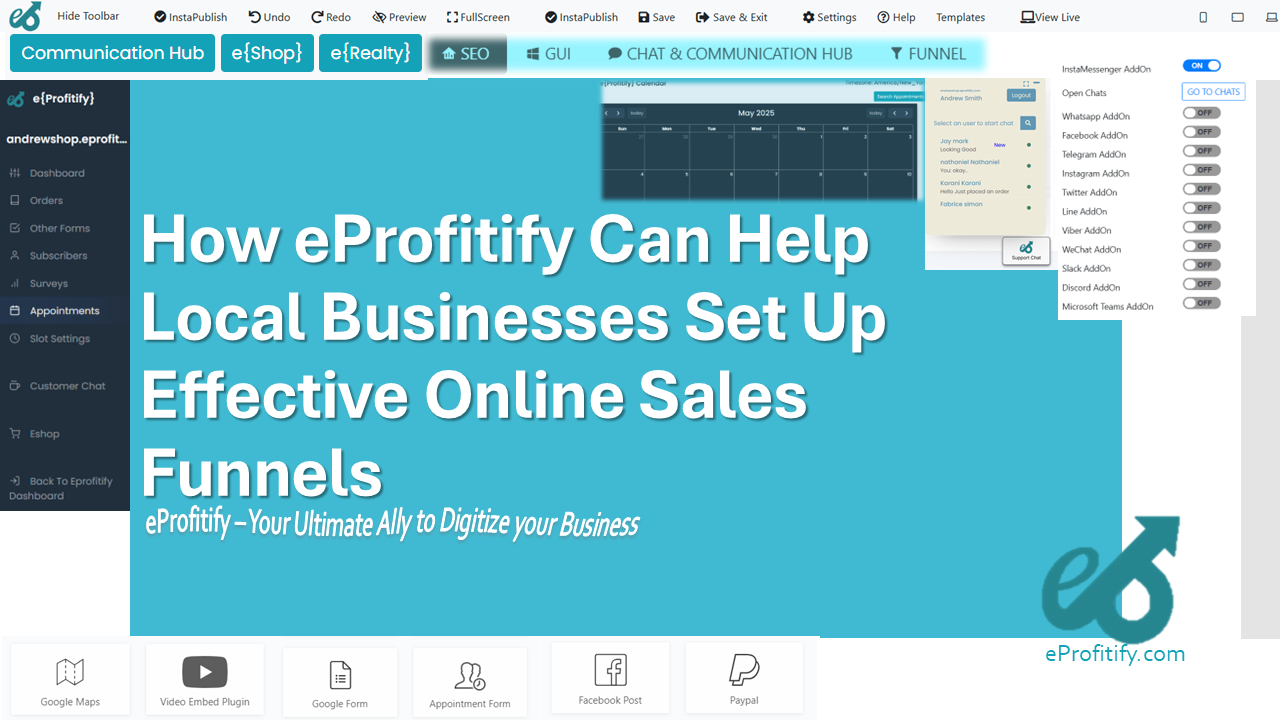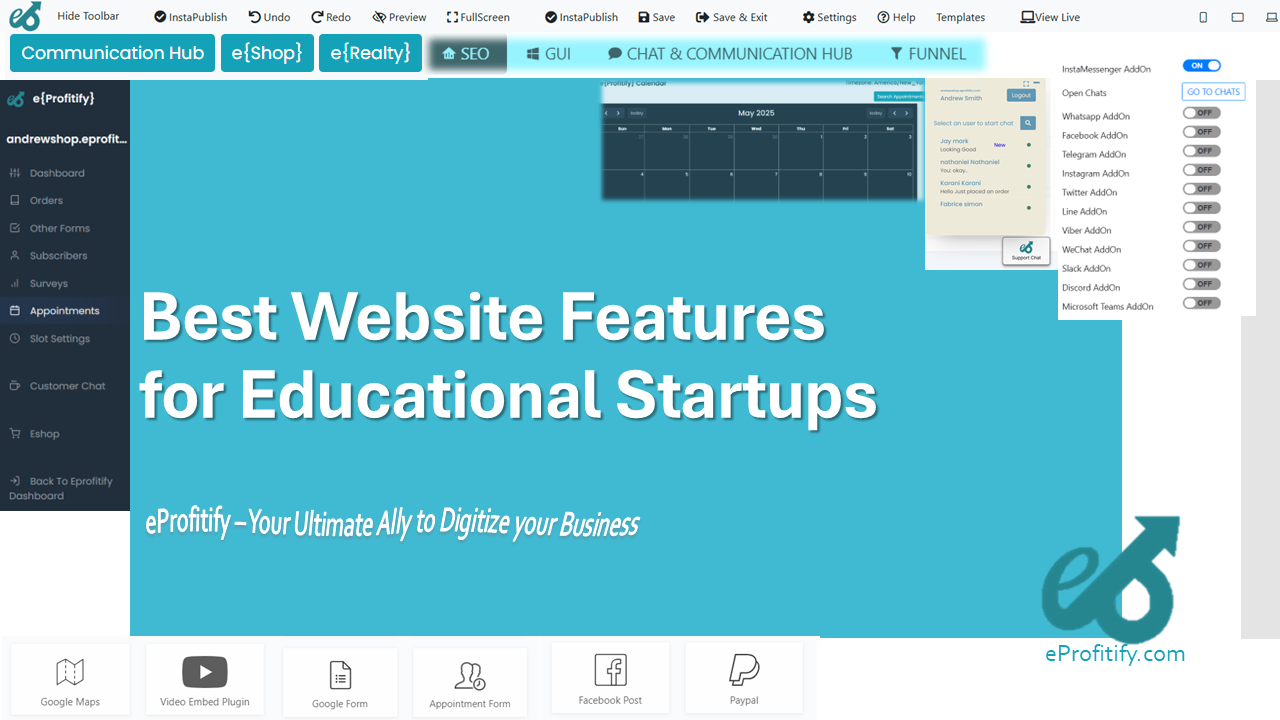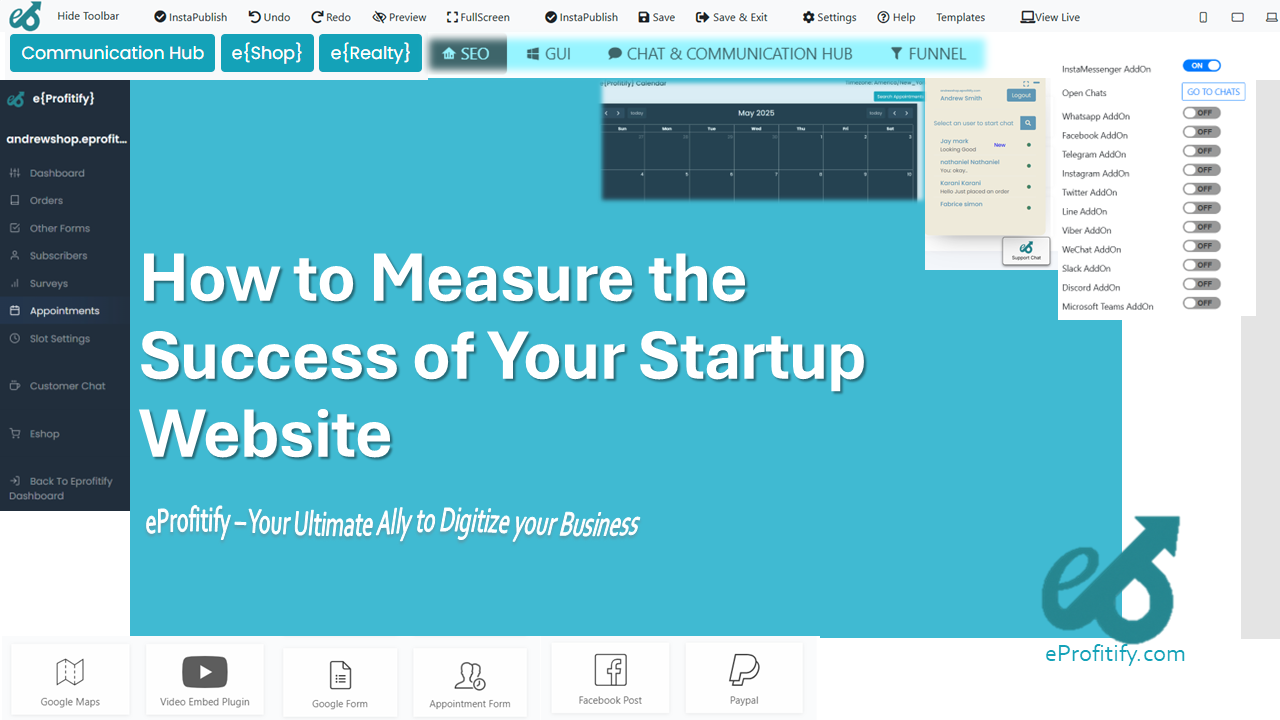How to Scale Your Small Business Website without Breaking the Bank
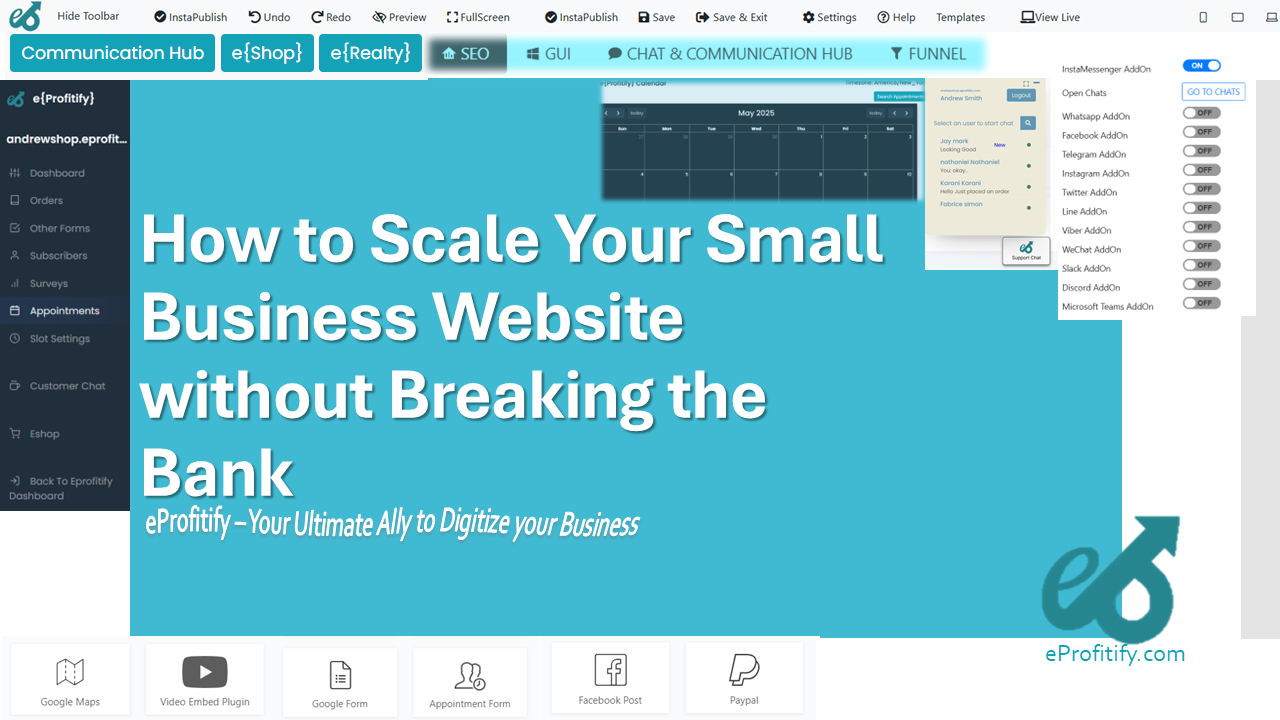
How to Scale Your Small Business Website Without Breaking the Bank
Scaling a small business website is critical for growth, but for many entrepreneurs, the cost of expansion can be daunting. With 36% of small businesses citing limited budgets as their biggest hurdle to growth (Deloitte), finding affordable solutions is essential. The good news? Scaling your website doesn’t require a massive investment. By leveraging smart strategies, automation, and integrated tools like Eprofitify—a leading all-in-one website publishing and management platform—you can grow efficiently without overspending. Here’s how.
1. Optimize Your Existing Infrastructure
Before investing in new tools, ensure your website is running as efficiently as possible. Slow load times and poor performance cost businesses $2.6 billion annually in lost revenue (Akamai), making optimization a priority. Start by:
- Compressing images and videos to reduce page load times.
- Using caching plugins to speed up content delivery.
- Removing redundant plugins or code that slow down your site.
Eprofitify simplifies this process with its optimized hosting infrastructure and built-in performance tools, ensuring your site stays fast even as traffic grows.
2. Leverage Cloud-Based Hosting
Traditional hosting plans can become costly as your website scales. Cloud hosting offers flexibility, allowing you to pay only for the resources you use. Statista reports that 67% of businesses now rely on cloud services, citing cost savings as a key driver. Platforms like AWS or Google Cloud provide scalable solutions, but for small businesses, managed services like Eprofitify’s cloud hosting offer an affordable "set-and-forget" option with automatic scaling during traffic spikes.
3. Prioritize Mobile Optimization
With mobile devices driving 58% of global website traffic (Statcounter), a mobile-first design is non-negotiable. Google’s Mobile-First Indexing also prioritizes mobile-optimized sites in search rankings. Use responsive templates and test your site’s mobile performance using tools like Google’s Mobile-Friendly Test. Eprofitify includes mobile-responsive designs by default, ensuring seamless user experiences across devices.
4. Adopt an All-in-One Platform Like Eprofitify
Investing in disparate tools for hosting, CRM, ecommerce, and customer support quickly becomes expensive. Eprofitify consolidates these functions into a single platform, reducing costs and streamlining operations. Key features include:
- Instant Messaging: Engage customers in real time without third-party apps.
- Appointment Management: Automate bookings and reduce no-shows.
- Ecommerce Tools: Launch a storefront with integrated payment processing.
- CRM System: Track customer interactions and nurture leads.
- Analytics Dashboard: Monitor traffic, sales, and user behavior in one place.
By avoiding subscription fees for multiple tools, businesses save an average of 30% annually (Gartner).
5. Automate Repetitive Tasks
Automation reduces labor costs and human error. For example:
- Use chatbots (included in Eprofitify’s toolkit) to handle 24/7 customer queries.
- Automate email marketing campaigns based on user behavior.
- Schedule social media posts in bulk.
McKinsey found that automation can cut operational costs by up to 20%, freeing resources for strategic growth.
6. Focus on Content Marketing
High-quality content drives organic traffic and builds brand authority. According to DemandMetric, content marketing costs 62% less than traditional marketing while generating triple the leads. Use Eprofitify’s SEO tools and blogging features to publish keyword-optimized articles, videos, and case studies. Repurpose content across platforms (e.g., turning blogs into social media posts) to maximize reach.
7. Implement a CRM for Customer Retention
Acquiring a new customer costs five times more than retaining an existing one (Invesp). Eprofitify’s built-in CRM helps you segment audiences, track purchase history, and send personalized offers. Loyalty programs and post-purchase follow-ups can boost repeat sales—a critical tactic, given that returning customers spend 67% more than new ones (BIA/Kelsey).
8. Monitor and Analyze Performance
Scaling blindly risks wasted spending. Use analytics to identify what’s working. Tools like Google Analytics (integrated with Eprofitify) reveal traffic sources, bounce rates, and conversion paths. For example, if 70% of your traffic comes from mobile but conversions are low, focus on improving mobile checkout processes.
9. Leverage SEO and Social Media
SEO is a cost-effective way to attract long-term traffic. Websites ranking on Google’s first page capture 39% of clicks (Backlinko). Optimize meta tags, headers, and alt text, and publish locally-targeted content if applicable. Pair this with social media engagement: 54% of shoppers use social platforms to research products (GlobalWebIndex). Eprofitify’s social media scheduler and SEO audit tools simplify these efforts.
10. Use Affordable Payment Solutions
Ecommerce businesses lose $260 billion annually to cart abandonment, often due to limited payment options (Baymard Institute). Integrate flexible solutions like PayPal, Stripe, or Buy Now, Pay Later services. Eprofitify supports 100+ payment gateways, reducing friction at checkout.
11. Outsource Strategically
Hiring full-time staff for specialized tasks (e.g., graphic design) can strain budgets. Platforms like Fiverr or Upwork offer freelancers for one-off projects. Reserve in-house roles for core activities like customer service.
Final Thoughts
Scaling a website on a budget requires a mix of optimization, automation, and smart investments. Eprofitify stands out as an ideal partner, offering enterprise-grade tools at small-business prices. With features ranging from CRM to ecommerce, it eliminates the need for costly third-party apps while ensuring seamless scalability.
By focusing on efficiency, customer retention, and data-driven decisions, you can grow your online presence sustainably. Remember: Scaling isn’t about spending more—it’s about spending wisely. Tools like Eprofitify make this possible, empowering you to compete without compromising your budget.
Ready to scale? Explore how Eprofitify’s all-in-one platform can transform your business at eprofitify.com.
Word Count: 1,000

